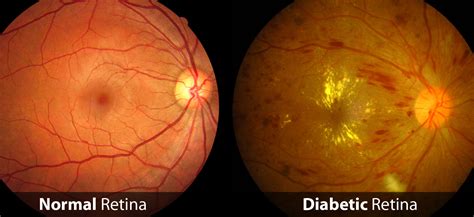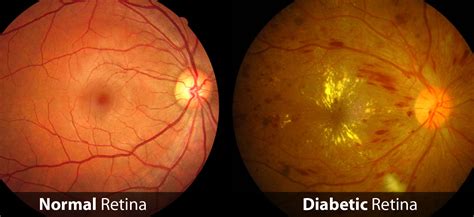Intro
Protect your vision with our 5 tips for a diabetes eyesight test, including regular retinopathy screenings, monitoring blood sugar levels, and maintaining a healthy diet to prevent diabetic macular edema and blindness.
Diabetes is a chronic health condition that affects millions of people worldwide, and one of its most significant complications is its impact on eyesight. High blood sugar levels can damage the blood vessels in the retina, leading to a condition known as diabetic retinopathy. This is why regular diabetes eyesight tests are crucial for people with diabetes. In this article, we will discuss the importance of diabetes eyesight tests and provide five tips to help you take care of your eyes.
Diabetes can cause a range of eye problems, including blurred vision, double vision, and even blindness. The good news is that many of these problems can be prevented or treated if caught early. Regular diabetes eyesight tests can help identify any potential issues before they become serious. These tests are usually performed by an eye doctor, also known as an optometrist or ophthalmologist, and involve a series of examinations to check the health of your eyes.
The importance of diabetes eyesight tests cannot be overstated. By catching any potential issues early, you can help prevent more serious problems from developing. For example, diabetic retinopathy can be treated with laser surgery or injections, but only if it is caught early. If left untreated, diabetic retinopathy can lead to blindness, which is why regular diabetes eyesight tests are so crucial.
Understanding Diabetic Retinopathy

Diabetic retinopathy is a complication of diabetes that occurs when high blood sugar levels damage the blood vessels in the retina. The retina is the light-sensitive tissue at the back of the eye, and it is responsible for transmitting visual information to the brain. When the blood vessels in the retina are damaged, they can leak or become blocked, causing vision problems. There are four stages of diabetic retinopathy, ranging from mild to severe, and each stage requires different treatment.
Stages of Diabetic Retinopathy
The four stages of diabetic retinopathy are:
- Mild non-proliferative diabetic retinopathy: This is the earliest stage of diabetic retinopathy, and it is characterized by the formation of small swellings in the retina.
- Moderate non-proliferative diabetic retinopathy: At this stage, the blood vessels in the retina begin to leak, causing vision problems.
- Severe non-proliferative diabetic retinopathy: This stage is characterized by the growth of new blood vessels in the retina, which can cause vision problems and increase the risk of blindness.
- Proliferative diabetic retinopathy: This is the most advanced stage of diabetic retinopathy, and it is characterized by the growth of new blood vessels in the retina that can cause blindness.
5 Tips for Diabetes Eyesight Tests

Here are five tips to help you take care of your eyes and prepare for diabetes eyesight tests:
- Get regular eye exams: Regular eye exams are crucial for people with diabetes. The American Diabetes Association recommends that people with diabetes have a comprehensive eye exam at least once a year.
- Monitor your blood sugar levels: High blood sugar levels can damage the blood vessels in the retina, leading to diabetic retinopathy. Monitoring your blood sugar levels and keeping them under control can help prevent this complication.
- Eat a healthy diet: A healthy diet rich in fruits, vegetables, and whole grains can help keep your eyes healthy. Foods that are high in antioxidants, such as leafy greens and berries, are particularly beneficial for eye health.
- Don't smoke: Smoking can increase the risk of diabetic retinopathy and other eye problems. Quitting smoking can help reduce this risk and improve overall health.
- Stay hydrated: Drinking plenty of water can help keep your eyes moist and healthy. Dehydration can cause eye strain and other vision problems, so it's essential to stay hydrated.
Preparing for a Diabetes Eyesight Test
Before a diabetes eyesight test, there are several things you can do to prepare. These include:
- Bringing a list of your medications and any allergies you have
- Wearing your glasses or contact lenses if you need them
- Avoiding wearing eye makeup or perfume
- Bringing a friend or family member to drive you home if you need to have your eyes dilated
Treatment Options for Diabetic Retinopathy

There are several treatment options available for diabetic retinopathy, including:
- Laser surgery: This involves using a laser to destroy the damaged blood vessels in the retina.
- Injections: This involves injecting medication into the eye to reduce swelling and prevent further damage.
- Vitrectomy: This is a surgical procedure that involves removing the vitreous gel from the eye and replacing it with a gas or oil.
Risks and Benefits of Treatment
Each treatment option for diabetic retinopathy has its own risks and benefits. For example, laser surgery can cause blind spots or double vision, while injections can cause eye pain or inflammation. Vitrectomy can cause cataracts or retinal detachment. It's essential to discuss the risks and benefits of each treatment option with your eye doctor to determine the best course of treatment for your individual needs.
Living with Diabetic Retinopathy

Living with diabetic retinopathy requires careful management of your diabetes and regular eye exams. It's essential to work closely with your healthcare team to develop a treatment plan that meets your individual needs. This may involve making lifestyle changes, such as eating a healthy diet and getting regular exercise, as well as taking medication to manage your blood sugar levels.
Coping with Vision Loss
If you experience vision loss due to diabetic retinopathy, there are several things you can do to cope. These include:
- Using assistive devices, such as magnifying glasses or a white cane
- Making changes to your home, such as installing handrails or improving lighting
- Seeking support from friends, family, or a support group
- Learning new skills, such as braille or adaptive technology
Conclusion and Next Steps

In conclusion, diabetes eyesight tests are a crucial part of managing diabetes and preventing complications. By following the five tips outlined in this article, you can help take care of your eyes and reduce the risk of diabetic retinopathy. Remember to get regular eye exams, monitor your blood sugar levels, eat a healthy diet, don't smoke, and stay hydrated. If you experience vision loss due to diabetic retinopathy, there are several things you can do to cope, including using assistive devices, making changes to your home, seeking support, and learning new skills.
We hope this article has provided you with valuable information and insights into diabetes eyesight tests. If you have any questions or concerns, please don't hesitate to reach out to your healthcare team. Remember to share this article with friends and family members who may be affected by diabetes, and let's work together to promote eye health and prevent complications.
What is diabetic retinopathy?
+Diabetic retinopathy is a complication of diabetes that occurs when high blood sugar levels damage the blood vessels in the retina.
How often should I get a diabetes eyesight test?
+The American Diabetes Association recommends that people with diabetes have a comprehensive eye exam at least once a year.
Can diabetic retinopathy be treated?
+Yes, diabetic retinopathy can be treated with laser surgery, injections, or vitrectomy, depending on the stage and severity of the condition.
